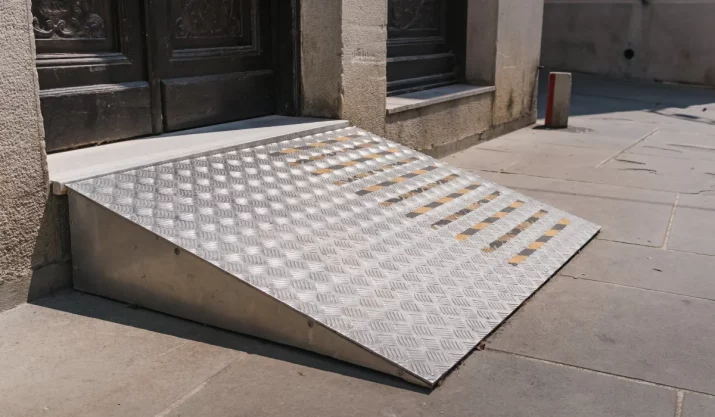Comparing Home Elevator Models In the Bay Area: 2026 Guide

Table of Contents
- Key Takeaways
- How To Use This Home Elevator Bay Area Comparison
- Understanding Market Options
- Hydraulic Elevators: Reliable Strength For Everyday Use
- Traction Elevators: Smooth, Efficient, And Familiar
- Pneumatic Vacuum Elevators: Modern, Compact, And Space-Saving
- Shaftless And Self-Supporting Home Lifts: Simple Access For Two Levels
- Side-By-Side Comparison Of Common Home Elevator Types
- Space Planning: Hoistways, Floor Cuts, And Equipment
- Accessibility, Aging In Place, And Safety Features
- New Construction vs. Existing Homes
- Home Elevator Cost, Warranty, And Service
- When A Stair Lift Or Platform Lift Makes More Sense
- Making The Right Choice For Your Bay Area Home
- FAQs
As we age, our needs change. A safe, comfortable home that is easy to move through helps you or a loved one age in place. Many Bay Area homeowners consider a home elevator when stairs become difficult or when planning to age in place. A clear Bay Area home elevator comparison shows which options fit your layout, mobility needs, and long-term plans.
Homes across San Francisco, Oakland, San Jose, and Palo Alto vary in size and structure. This guide explains how elevator models fit tight floor plans, hillside lots, big remodels, and compact condos. You’ll see how weight limits, hoistway and machine room needs, and features support people with limited mobility.
You’ll learn how hydraulic, traction, pneumatic vacuum, and shaftless home elevators compare. We cover installation, fit for new builds vs. existing homes, safety features, costs, and service.
Key Takeaways
- Hydraulic, traction, shaftless, and vacuum elevators each serve different accessibility and floorplan needs.
- Pneumatic vacuum elevators offer a space-saving footprint with no machine room or framed elevator shaft.
- Traditional home elevators are suited to higher loads and offer more customization options for finishing.
- Planning for safety, design options, and long-term service ensures your system supports aging in place.
How To Use This Home Elevator Bay Area Comparison
Start by listing the rooms you use most and the floors you need each day. Measure door widths and turning space. Decide if a framed hoistway can fit without significant work. These details matter more than style.
In dense areas like San Francisco or Oakland, a shaftless or compact lift may be the best option. In San Jose or Palo Alto, a remodel may allow a larger cab or more stops. Plan for caregiver access, wheelchair use, and medical equipment.
This comparison covers power needs, floor cuts, framing, configurations, and layout challenges. These details help you estimate cost, improve functionality, and pick finishes that match your home.
Understanding Market Options
At California Mobility, we offer home elevators from brands like Bruno and Access BDD and provide home elevator installation in California. You may also see shaftless and hydraulic designs from other makers.
These examples show the range of layouts on the market. We focus on solutions that fit local needs and long-term accessibility.
Hydraulic Elevators: Reliable Strength For Everyday Use
Hydraulic elevators are among the most common residential elevators. They ride smoothly and lift heavy loads. A piston powered by fluid moves the cab. Most setups need a small machine room on the lowest level. Hydraulic systems work well when you need higher load capacity, a wheelchair-accessible cab, or room for equipment.
In cities like Oakland and San Francisco, framing can vary from home to home. Hydraulic systems perform well in multi-level layouts. They need a full hoistway, so they fit best during a remodel or addition. They handle daily use like carrying groceries, medical gear, or mobility devices.
Our team installs hydraulic options and helps you choose finishes, controls, and safety features for aging in place.
Traction Elevators: Smooth, Efficient, And Familiar
Traction elevators use ropes and counterweights, as in commercial elevators, but they function as residential elevators in modern homes. They need a framed hoistway. Some setups need a machine room; some do not.
These systems work well in San Jose and Palo Alto, where a smooth, efficient ride matters. Traction setups allow flexible cab sizes and finishes, so they blend into a remodel.
Pneumatic Vacuum Elevators: Modern, Compact, And Space-Saving
The pneumatic vacuum elevator system uses air pressure to move a cab inside a tube. This type of elevator does not need a framed shaft or machine room, so it fits tight spaces in older San Francisco and Oakland homes. The small footprint and clear walls create a modern look without major structural work.
Weight capacity is lower than that of hydraulic or traction systems. Match the size to your needs. If you use a walker or power wheelchair, check the cab depth and door width.
Shaftless And Self-Supporting Home Lifts: Simple Access For Two Levels
Shaftless, self-supporting lifts are compact solutions for two floors. They move through a small floor opening and need no full shaft, keeping home modifications and construction light. They work well in retrofits when you want to avoid significant changes.
These lift systems support daily movement, such as reaching a main-floor bedroom or moving between two key levels. They do not handle heavy loads, but they help you stay independent without a major remodel.
Side-By-Side Comparison Of Common Home Elevator Types
This table helps you match your layout, mobility needs, and long-term plans to the right solution.
| Elevator Type | Best For | Machine Room | Hoistway | Weight Capacity | Fit In Existing Home | Notes |
|---|---|---|---|---|---|---|
| Hydraulic elevators | Multi-level homes, frequent use | Yes | Required | High | Moderate (needs framing) | Smooth ride, strong power |
| Traction elevators | Energy efficiency, modern design | Optional | Required | Medium-High | Good for remodels | Smooth operation |
| Pneumatic vacuum elevators | Tight spaces, modern look | No | No | Lower | Excellent | Uses air pressure to move the cab |
| Shaftless, self-supporting home lifts | Two-level access | No | No | Lower | Ideal | Compact, simple installation |
Space Planning: Hoistways, Floor Cuts, And Equipment
A big part of planning for home elevators is visualizing space. Traditional home elevators need a full hoistway, which may mean removing closets, adding framing, or cutting openings between floors. Some hydraulic setups also need a machine room.
To avoid major work, choose a shaftless lift or a vacuum system. These options reduce floor and framing changes and are easier to add in older homes.
At California Mobility, we can review your floor plan and explain how the layout affects installation and long-term service.
Accessibility, Aging In Place, And Safety Features
Your elevator should help you stay independent. Look for clear controls, smooth thresholds, good lighting, and safety features like emergency lowering. Larger cabs can fit caregivers, walkers, and mobility devices.
According to the Centers for Disease Control and Prevention (CDC), each year, millions of older adults, those 65 and older, fall and suffer injuries. This statistic shows why safe, reliable movement between floors is so important in everyday life.
The National Institute on Aging (NIA) also notes that “aging in place means being able to live in your own home safely, independently, and comfortably,” and choosing the right mobility equipment helps make that possible.
If you pair an elevator with a stair lift, we can help plan each level for safe, comfortable movement. Many homeowners add a platform lift or wheelchair lifts at an entry or garage to simplify outdoor access.
New Construction vs. Existing Homes
In new builds or major remodels, you can plan for larger cabs, custom finishes, and efficient systems. You can design the shaft during framing, place the machine room where it fits best, and choose high-end finishes or options.
In an existing home, a compact lift or vacuum system can reduce construction. Shaftless units help when stairs are a challenge or when you want a practical, cost-effective solution now.
Our team works with local builders across California, including San Jose, Palo Alto, Oakland, and Union City, to streamline installation.
Home Elevator Cost, Warranty, And Service
Home elevator costs depend on the number of stops, cab size, framing, and finishes. Options and upgrades can raise the budget, especially custom cabs.
A clear warranty and a responsive company matter as much as the product.
When A Stair Lift Or Platform Lift Makes More Sense
Sometimes a stair lift or platform lift is a better fit than an elevator. Stair lifts work well on a single staircase and cost less if you do not need to travel between many floors. Platform lifts help with porch steps, garage entries, or short interior rises.
We carry stair lift and vertical platform lift solutions that pair well with long-term accessibility planning.
Making The Right Choice For Your Bay Area Home
Choosing the right system starts with a clear comparison of Bay Area home elevator options. This guide reviewed the main types, how they fit local homes, and how they support daily movement and long-term mobility.
If you live in the Bay Area, our team at California Mobility can help compare models, review your floor plan, and plan for safe, comfortable aging in place.
Ready to start? Contact us today or request a free quote to review options and find a fit for your home.






